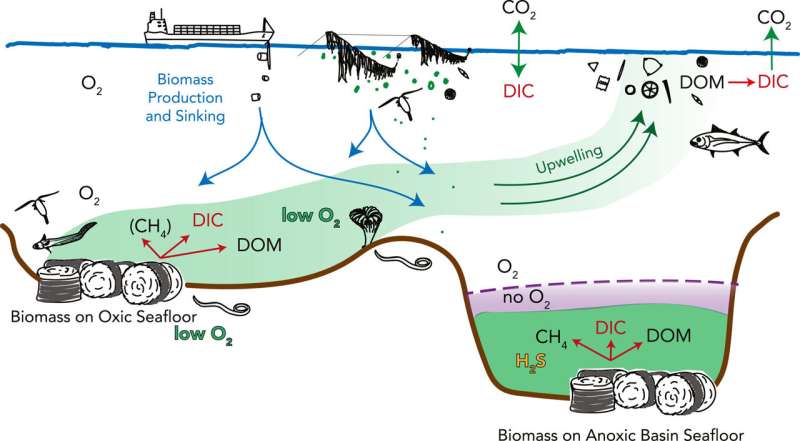Anoxic marine basins are being considered as potential sites for large-scale carbon sequestration in the deep ocean to mitigate climate change. UC Santa Barbara researchers propose this idea in a paper published in AGU Advances, emphasizing the need for net negative CO2 removal to achieve climate goals set by the International Panel on Climate Change.
Importance of Carbon Sequestration
The sinking of plant biomass to oxygen-free zones on the seafloor is suggested as a method for carbon storage. This approach prevents the release of CO2 and methane into the atmosphere during decomposition, potentially locking carbon away for long periods.
Challenges and Uncertainties
Despite its promise, this approach raises questions about its ecological and chemical impacts on marine ecosystems. Ensuring that decomposition byproducts do not harm sensitive habitats and preventing carbon from returning to the surface are significant concerns.
Exploration of Anoxic Marine Basins
Anoxic marine basins are identified as suitable sites due to their depth and isolation from oxygen-rich currents. These basins, devoid of animal life, primarily host microbes and specialized fungi, making them conducive to the preservation of plant matter.
Examination of Specific Basins
Three anoxic marine basins—Black Sea, Cariaco Basin, and Orca Basin—are studied to assess their suitability for biomass storage. The Black Sea emerges as the most viable option due to its depth, isolation, and capacity for large-scale carbon sequestration.
Conclusion and Future Directions
The sinking of plant biomass has garnered interest from private investors, leading to increased funding for research in deep-sea carbon sequestration. Further investigation is necessary to evaluate the benefits and drawbacks of various strategies to effectively mitigate climate change.
Multiple-Choice Questions (MCQs):
- What method of carbon sequestration is proposed for deep ocean storage?
- A) Direct injection of CO2 into ocean waters
- B) Sinking of plant biomass to oxygen-free zones
- C) Burying carbon in deep-sea trenches
- D) Fertilizing ocean waters to promote algal blooms
- Answer: B) Sinking of plant biomass to oxygen-free zones
- Why are anoxic marine basins considered suitable for carbon sequestration?
- A) They support diverse marine life
- B) They are highly oxygenated environments
- C) They are deep and isolated from oxygen-rich currents
- D) They have low levels of carbon concentration
- Answer: C) They are deep and isolated from oxygen-rich currents
- Which basin is identified as the most promising option for biomass storage?
- A) Cariaco Basin
- B) Orca Basin
- C) Black Sea
- D) Baltic Sea
- Answer: C) Black Sea
- What are the primary concerns associated with sinking plant biomass for carbon sequestration?
- A) Impact on marine biodiversity
- B) Leakage of decomposition byproducts
- C) Increased acidity of seawater
- D) Eutrophication of ocean waters
- Answer: B) Leakage of decomposition byproducts
